Enter the world of the Souk-el-Jadid off Djemma-el-Fna square
The narrow labyrinthine alleyways of the Souk-el-Jadid in Marrakech no doubt started in the distant past. Today, it is a haphazard and fascinating collection of markets, selling a wide variety of handmade and farmed produce.
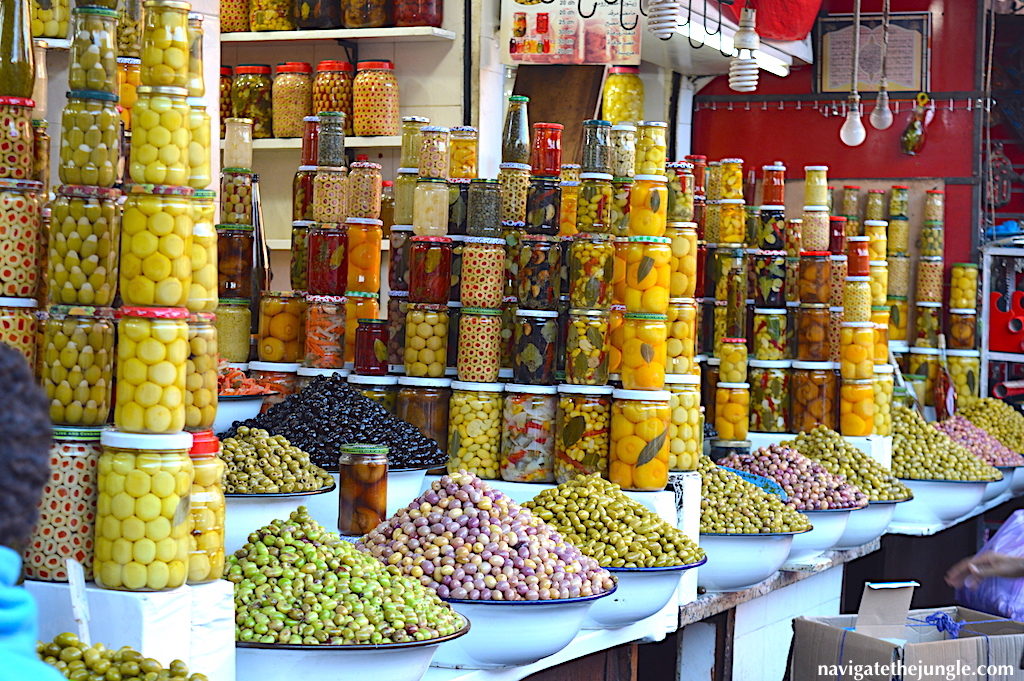
The entrance to the Souk leads directly from the ‘square’. There are many entrances, but the main one can be found by the ‘upmarket Palace restaurant’.
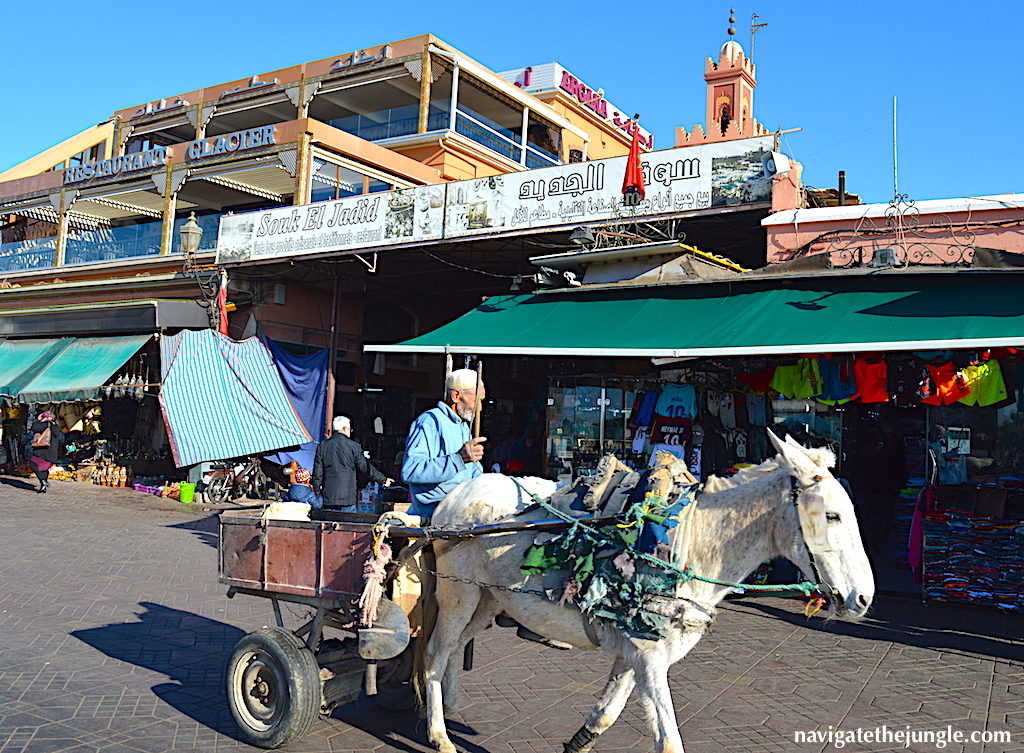
Enter a different world in here, just 3-hours from London. The alleyways are narrow and shaded from the sun. The colours radiating from the stalls, and the variety impressive.
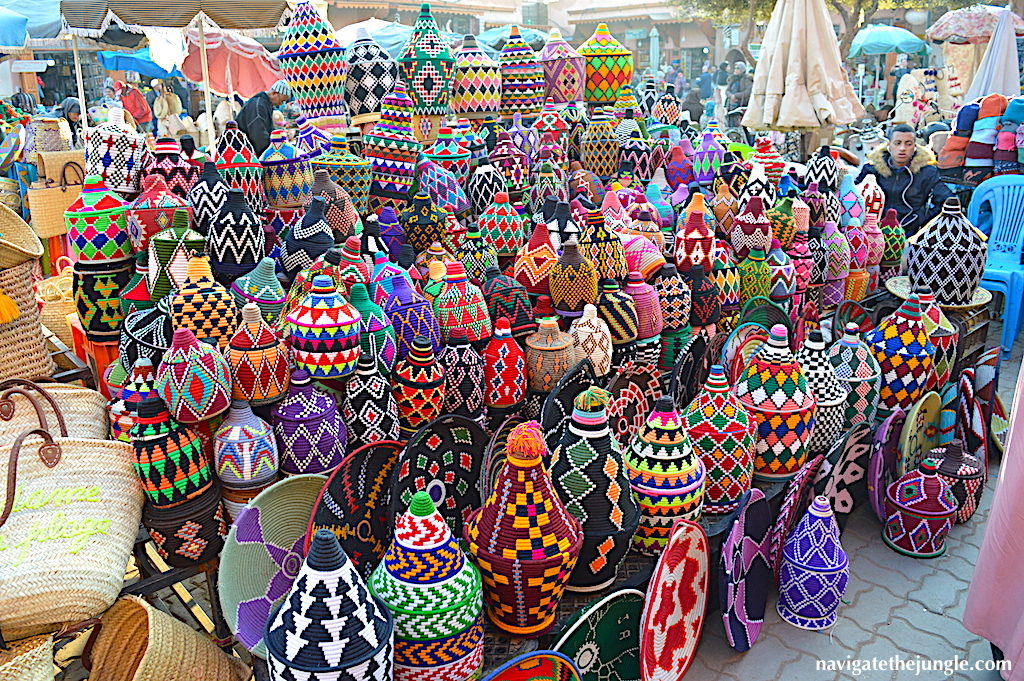
Traders sell beautifully coloured lanterns, leather poofs and hand painted glassware, slippers, and lanterns.
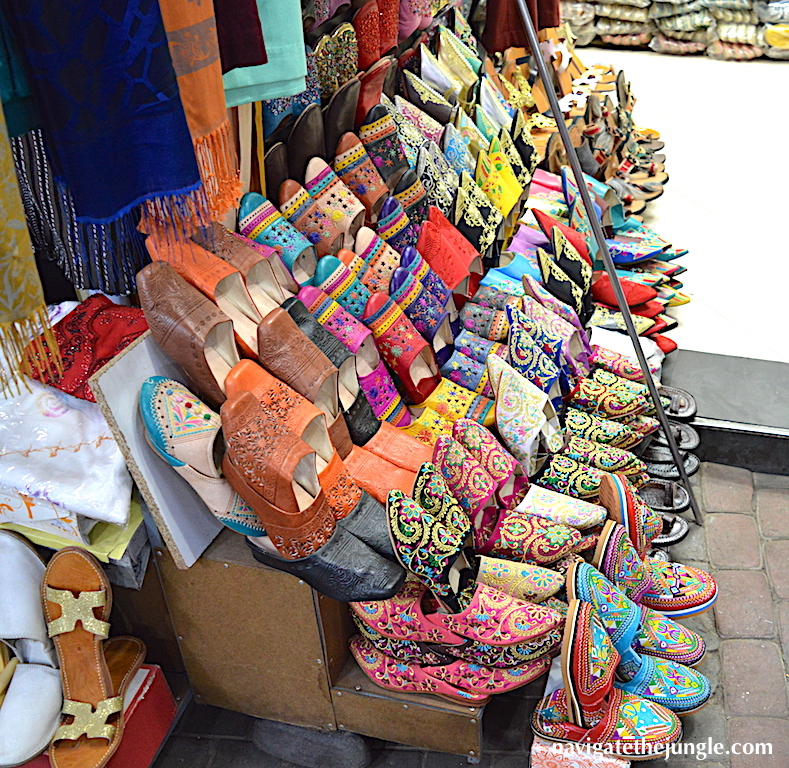
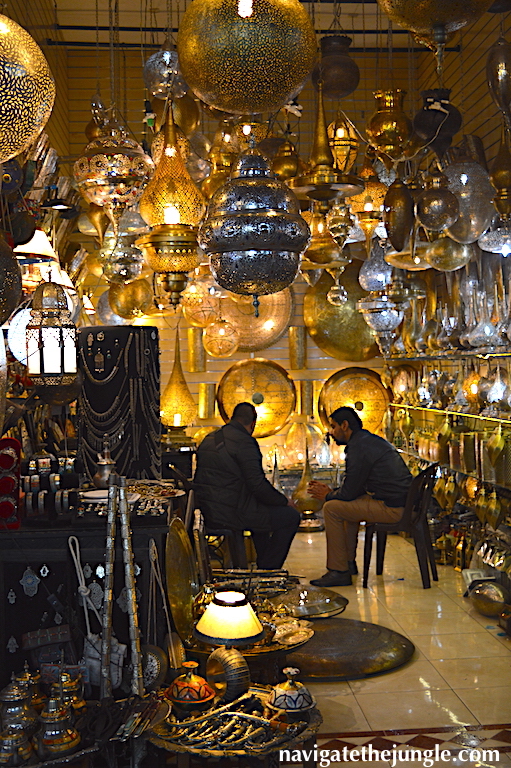
Further down, there are stalls selling hand-crafted metal light shades and hand-dyed materials. From the latter, all manner of stunning clothing and curtains are made. The atmosphere was medieval. This is the Souk Semmarine, west of the Slave Souk and is the main handicraft market.
Moroccos herbs and spices
Further along one comes across those selling herbs and spices. Unfortunately, many of these are not from Morocco and are imported, mostly from the Indian subcontinent. We are treated to an exploration of the herbs, the concoctions which make Moroccon Garam Masala and the varieties of tea. We promise to return, but in reality, many of the spices have lost their ‘kick’. Most probably as a result of being left out in the open.
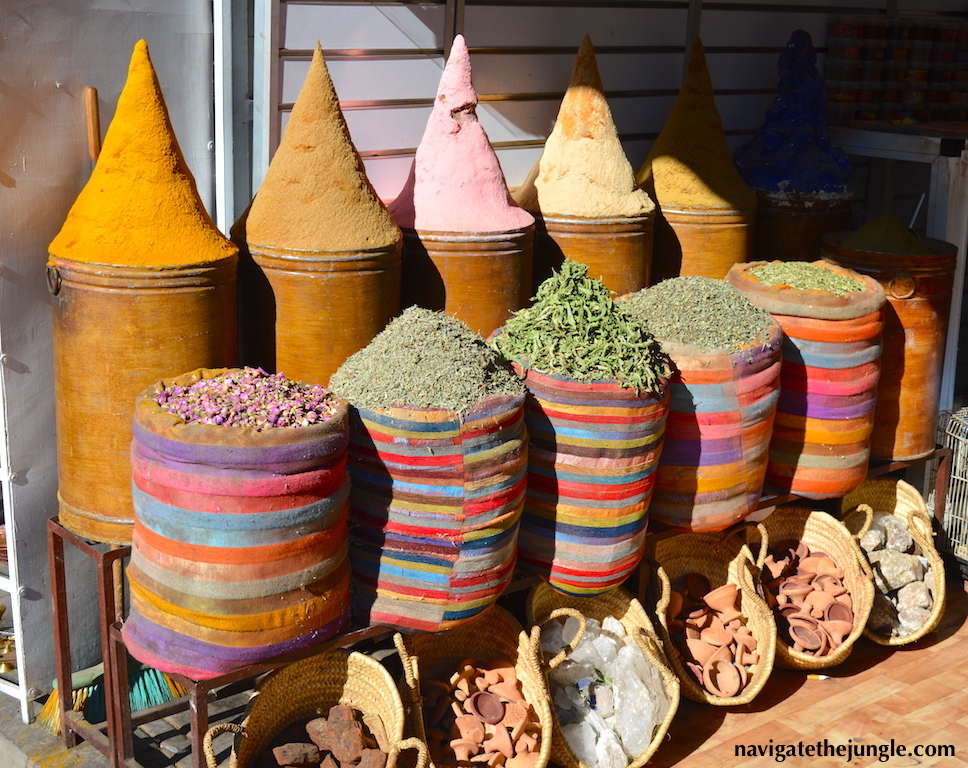
The afternoon drags on into the evening. We still haven’t had our fill.
Rahba Kedima et Souks
We enter a triangular courtyard, open to the elements. An information board acknowledges that this ‘square’ was originally where slaves and grain were traded starting in the 12th century. Today it has evolved into selling an eclectic mix of wares including apothecaries, wool market and cosmetics. Kohl to blacken the eyes and crushed poppy flowers to brighten the lips. Here the low sun castes striking shadows on colourful carpets hanging from a rooftop.
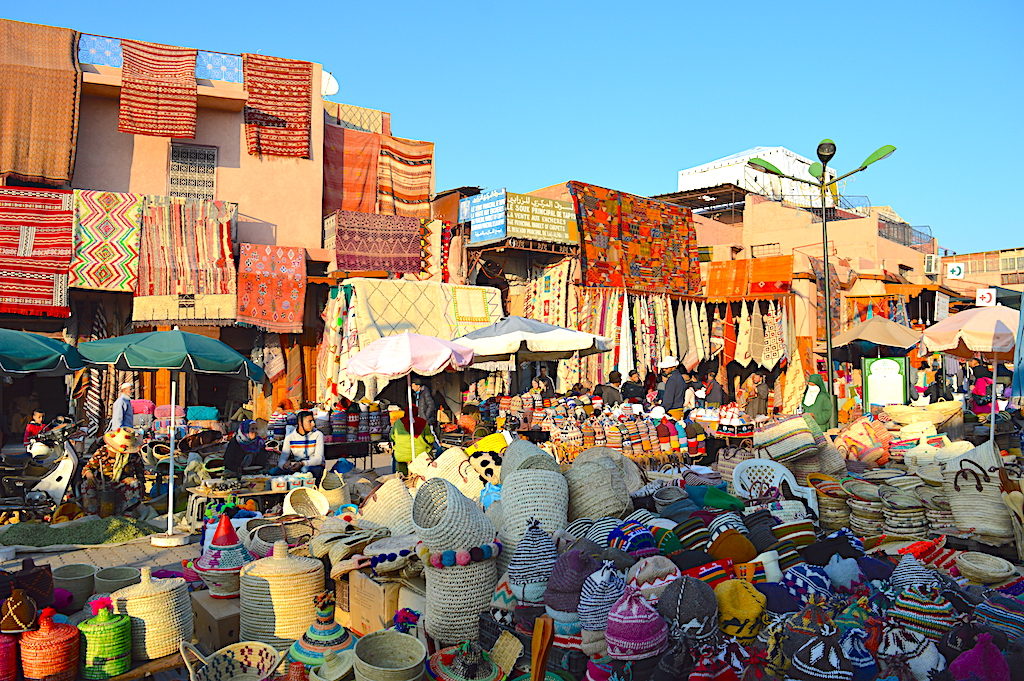
In the courtyard are also small caged tortoises and geckos! In the hustle and bustle of the ‘Slave square’ we watch traditional ladies pounding henna leaves to make a fine powder. The whole process overseen by a thoroughly ‘modern boss’.
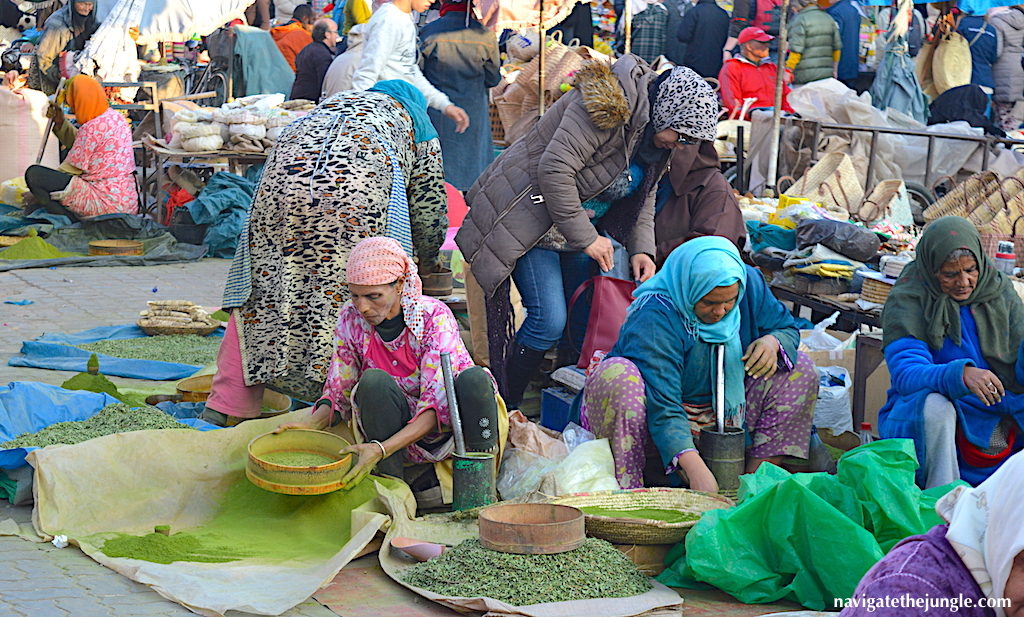
Festival of colour or the Souk des teinturiers
From here we had the choice of visiting the Souk Zerbia, where a lot of weaving takes place, or a poorer part of the Souk, Elghzel where wool was once sold. But before we can decide we are accosted by a ‘friendly’ local, eager to help. “You must see the festival of colour”, he tells us. We acknowledge him cursorily and move on. Around another corner in a shop selling lanterns, another stooge. Are you here for the festival of colour?
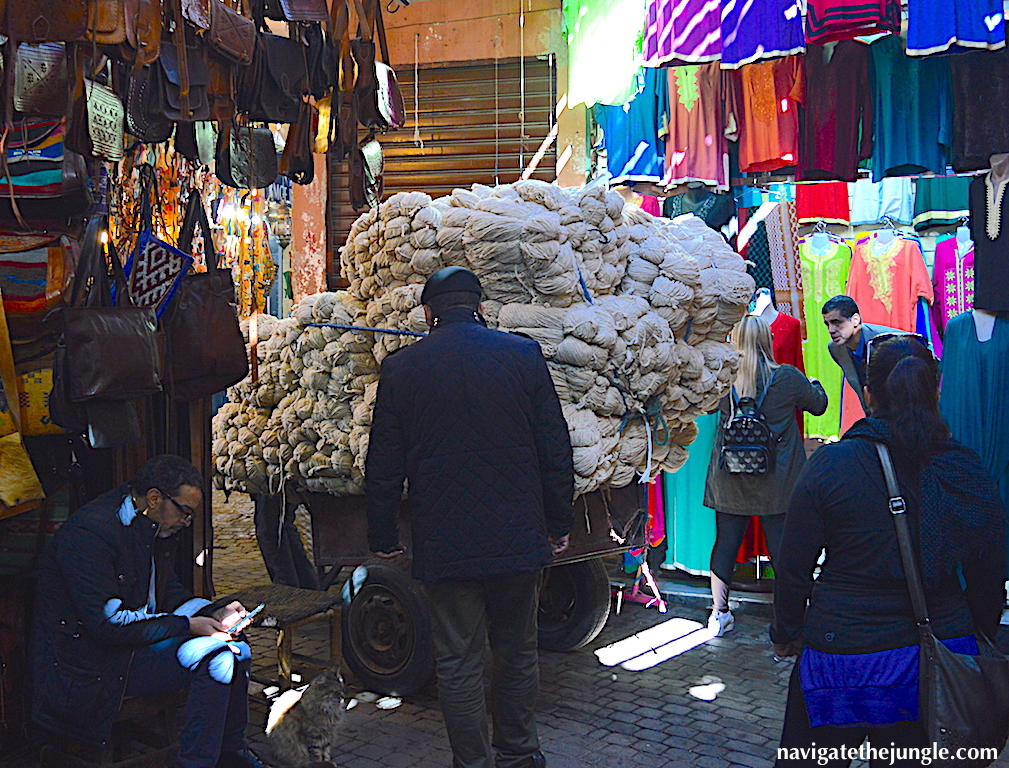
Their psychology seems to be working. Perhaps we should see the festival of colour?! We continue walking along the alleyways appearing to get ever deeper. Will we ever get out? More people mention the festival of colour. The alleyways now also seem more dilapidated. It feels like we have reached the bowels of the souk.
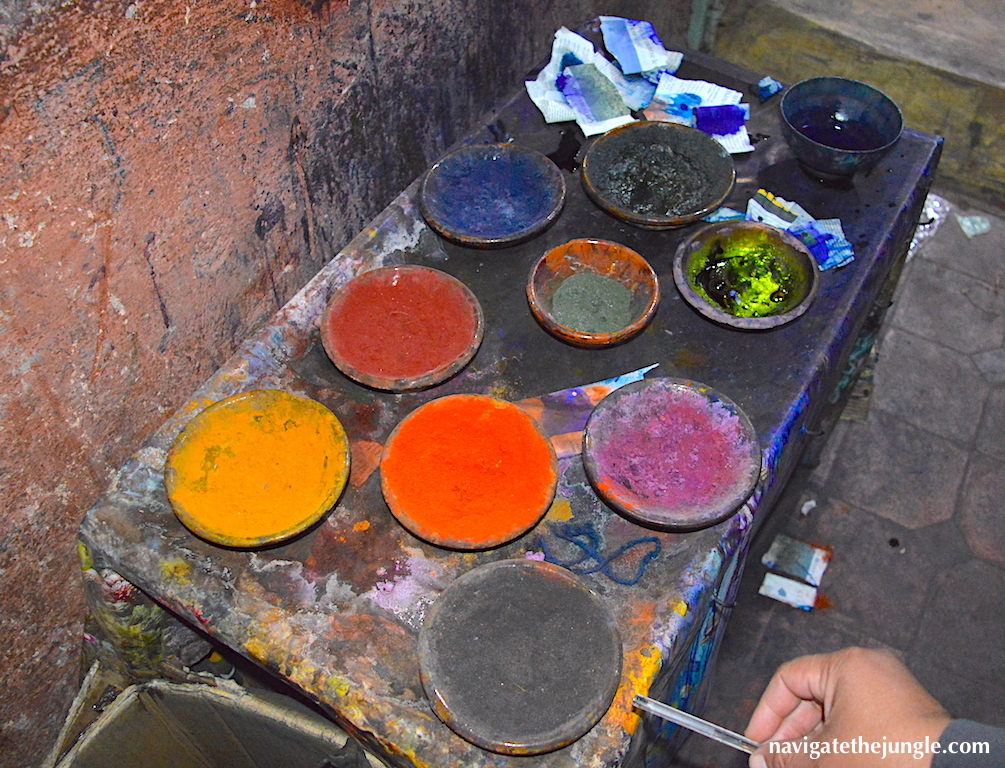
Here, there are blacksmiths pounding away at pieces of metal. “What are you making”, we ask? In reply we get “are you going to visit the festival of colour”? There clearly exists a network of spies. We give in and agree to visit the festival of colour.
Natural colours
This part of the souk specifically felt like a contradiction in terms. Surely, this was the dingiest part of the souk. Here the woollen and cotton threads are dyed in the traditional way. Poppy flowers for red, pomegranate peel or saffron fronds for yellow, blue from indigo and wild almond for green.
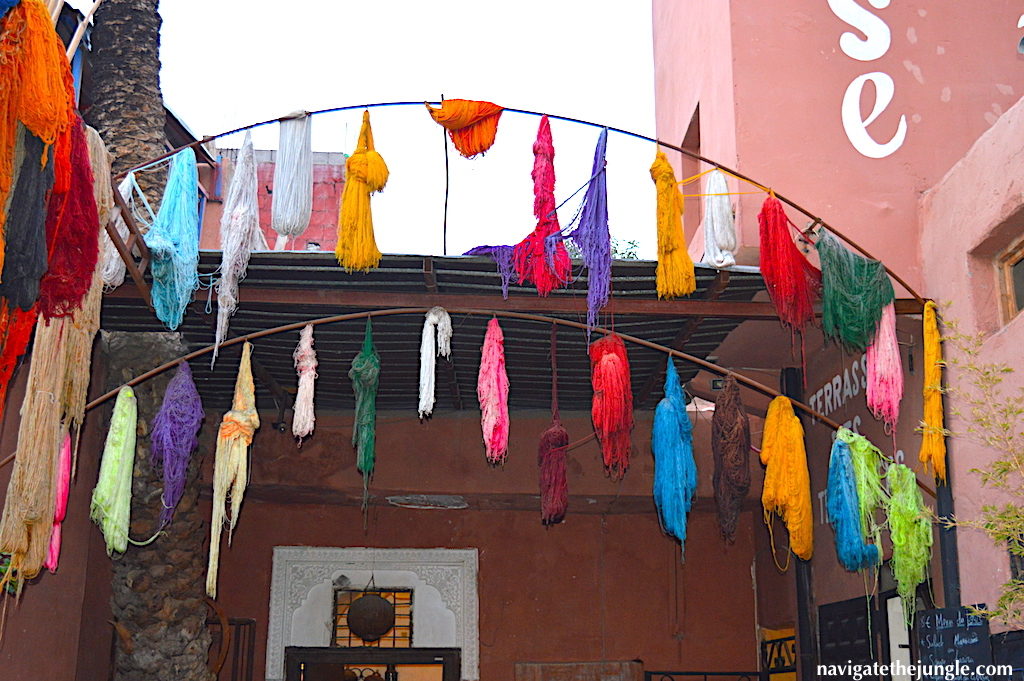
Other colours are produced by combining ingredients, while still other colours come from shells and other minerals. The working conditions needless to say were poor at best. The colourful threads they produce on the other hand, in these conditions, were pretty impressive. They try to sell us something in which we show interest. We finally show strength and walk away. It is a hard life and we promise ourselves we will buy something later.
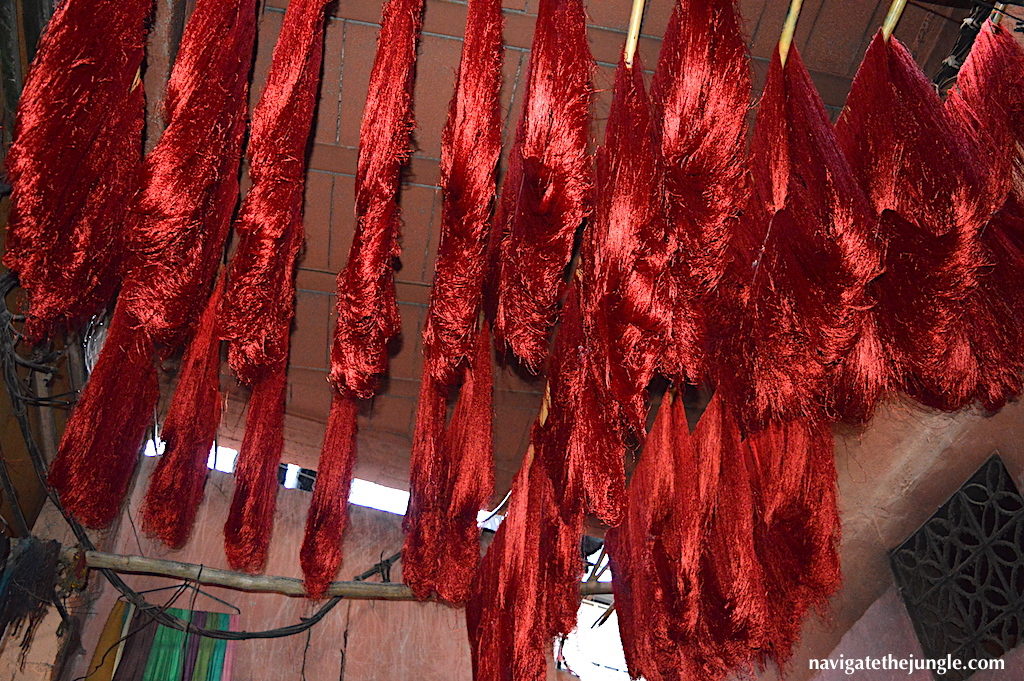
Crossing the divide
On the way, we stop to buy some local Moroccon sweets from a well laid out stall. In reply to our basic French the stall holder replies in a perfect cockney English accent. “Alright mate”? We now realise that many of those in the souks have lived either in France or the UK. He sells us 6 sweets for Dh15 and adds 3 more as a gift!
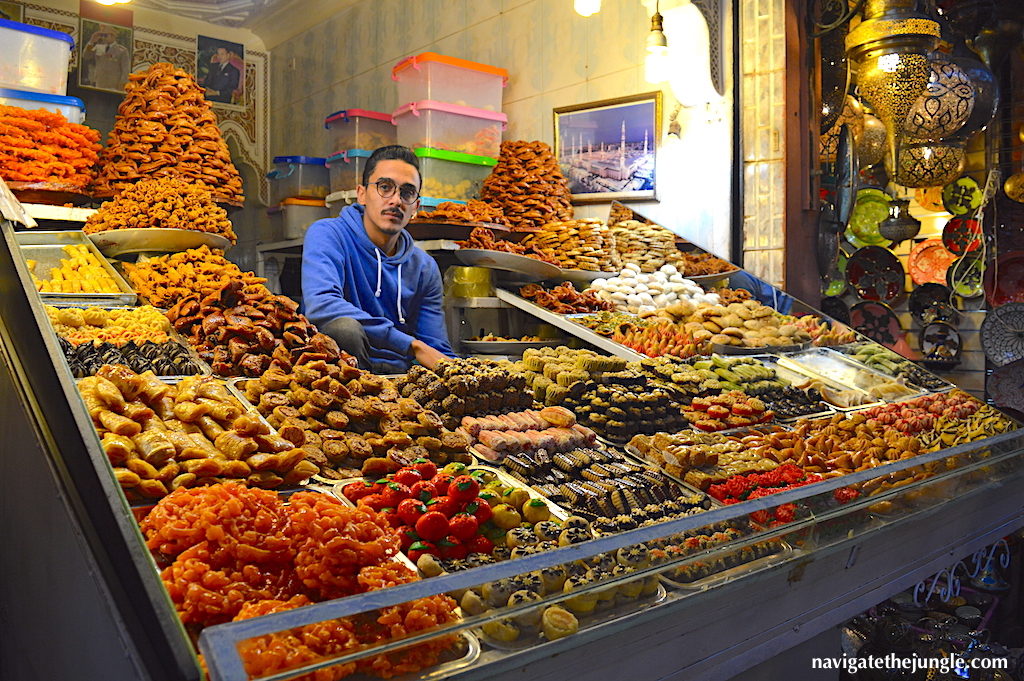
We now know we have paid too much. We learn never to buy anything at the price asked for without bargaining. Just bear in mind that starting prices are easily 3-4 times the actual price. This knowledge, allows us to be stronger and we hone our bargaining credentials further. No doubt this will hold us in good stead for the coming days in this country.
Eventually we extricate ourselves from the souk. Night had fallen and the Djemma-el-Fna had taken on a festive atmosphere. Above the bustling square the supermoon had risen, glowing bright orange in the clear night sky.
Nangle angle
Be fearless in your bargaining!
Facts & tips
We stayed in the Riad Challa close to the Djemma-el-Fna and Souk. Its a 5-minute walk from here to the square.




